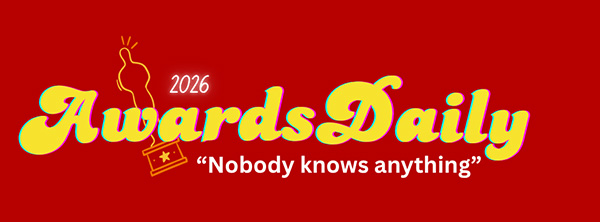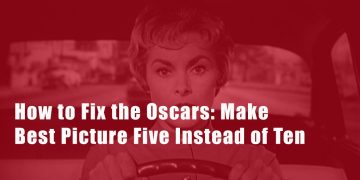Dave Zirin, Sports Editor at The Nation, is a rare bird in the world of sports journalism. While he clearly loves football (one doesn’t keep up like he does without loving the game), when Zirin picks up his quill it’s usually to write critically about the sport. (Zirin has long been a fervent critic of the NFL and particularly the league’s commissioner, Roger Goodell.) Principally, though, Zirin writes on sports with an eye toward their societal impact. It’s not surprising then that his first film, Behind the Shield: The Power and Politics of the NFL, is a deep dive into football’s effects on American culture. Perhaps less expected though was that the writer’s maiden voyage into the documentary medium would be a fast-paced and flawlessly executed tour de force. In Behind the Shield, Zirin and director/editor Jeremy Earp have combined picture and prose to create a crackling and damning 90-minute exposé of the league, its beginnings, and what it has become.

The National Football League is a behemoth, not just in the financial sense, but in regard to its impact on society. That impact is hard to quantify—especially on American males—but the film does a fantastic job of conveying the sheer scale of its influence. I know the term “toxic masculinity” is a phrase that may be more than a little played out in 2022, but if you believe in its existence, by that term or by any other name, the film shows clearly the league’s role as a major perpetuator. Behind the Shield brilliantly illuminates (oftentimes using the NFL’s own promotional materials) the league’s use of war and battle metaphor, its cultural ideal of male aggression, and its politicization of the game. It also shows, quite harrowingly, how the league encourages players to fight through pain and injury to stay on the field by lionizing players that sacrifice their long-term health for the team’s short-term gain—one need only look at the current plight of Miami Dolphins’ quarterback Tua Tagovailoa to see the human cost of rushing players back on the field after injury.
One of the first concepts the film dispels is the notion that the politicization of football is relatively new. Using a combination of news clippings, old ads and photographs, historical context, and NFL promotional materials, the film shows that the NFL’s idealistic promulgation not just of what it means to be a man but what it means to be an American was prevalent long before Colin Kaepernick ever took a knee, dating back to football’s very inception. Zirin digs into its origins in the 19th century as a way to toughen up Ivy League college men in a time when American men “were coming to be seen as too soft and bookish to lead Americans onto the world stage and extend the country’s imperial ambitions.” Zirin argues that contrary to what many believe, football has not become politicized, but is—always has been—political to its core. Football began as a cultural backlash against the perceived “feminization” of the American male, and that in 2022, in Zirin’s own memorable words, “not much has changed.”
In our years of conflict abroad, from Vietnam through Iraq and Afghanistan, the film shows how politicians have used football to gain approval for war from the American public and how the NFL has been only too happy to oblige. It’s hard to argue with his evidence. When was the last time you saw an American sporting event that wasn’t rife with militaristic imagery—be it a color guard on the field, a salute to American soldiers announced over the PA, or pre-game war jets flying overhead?
My home in South Bend, Indiana is so close to Notre Dame Stadium that I can open my door and hear the call of every home game. One might say that I can almost see “Touchdown Jesus” from my house. Last year, I recall my wife and I lazing around on a lovely fall Saturday when the house began to rumble and shake. We looked at each other fearfully and my wife reached instinctively to grab the dog in case we needed to take cover or flee. We thought we might be experiencing an earthquake (not so common in the flatlands of Indiana). But then it dawned on me that this particular Saturday was the first home game of the year, and the window-rattling force was not coming from the ground below, but from the sky above in the form of fighter jets flying over the stadium.
As the realization settled that I was not experiencing a natural disaster, but a militaristic display of power attached to a sporting event, I went from being scared to angry. This was not the first flyover I’d ever heard and felt from my location so near the stadium, but this one was bigger, stronger, and more disruptive by some distance. I thought to myself: Just why. Who really needs this?
Behind The Shield gets right at the root of this ever growing phenomenon that ratcheted into high gear after 9/11 and has had its pedal to the floor ever since. The symbiotic relationship between the NFL and our nation’s military may not be new, but it is more pervasive than most are privy to. As the film points out, many advertisements that you see at games or on your television are not tributes to our armed forces paid for by the NFL, but are paid for by the military (and lining NFL pockets). Even Senator John McCain, a Vietnam veteran who was captured and tortured by the Viet Cong, decried what he called “Paid Patriotism.” That’s right. While the Pentagon may cut the checks, these on field and on TV promotions are actually funded by us—and by us I mean the United States tax payer. A reveal that I found sobering.

Furthermore, as shown consistently throughout Behind The Shield, the league leaves little to no room for dissent. While Colin Kaepernick’s refusal to stand for the national anthem was explicitly and specifically protesting police brutality against black people, the criticism he was met with went far beyond “Blue Lives Matter.” Kaepernick was maligned as a “traitor,” “un-american,” and as a man who stood against our military. I was glad to see Zirin touch on an often-overlooked part of the Kaepernick story: the reality that Kaepernick went from sitting during the national anthem to kneeling based on advice from former NFL player and military veteran Nate Boyer. Boyer, a white man, respected Kaepernick’s protest, and saw kneeling for black victims of police brutality as akin to kneeling before the grave of a fallen comrade. Regardless of his well-stated intention, Kaepernick and other players bold enough to kneel with him were vilified by then-candidate Donald Trump, who, in 2016, suggested that protesting players should not only be fired from the NFL, but should leave the country.
Despite being the 17th ranked quarterback in a league of 32 teams in his final NFL season, and having led his team, the San Francisco 49ers, to the Super Bowl just three years earlier, Colin Kaepernick has not played in a single NFL game since 2016. Even with 96 possible quarterback slots, Kaepernick has not received a single serious offer from a team since he opted out of his contract with the 49ers (knowing that he was going to be cut anyway).
While the league has since allowed a little more room for the voices of the players to be heard, and partnered with Jay Z to “promote social justice initiatives” and embrace black culture (check last year’s Dr. Dre-led Super Bowl half-time show), this has been more of a corporate grab for good PR than any genuine support for the players’ voices (the NFL moved to ban all player protests in 2018). Furthermore, owners continued “working behind the scenes to make sure Colin Kaepernick never walked onto the field again.” Sports journalist for The Atlantic Jemele Hill reminds us that “the NFL is far more concerned about appearing racist than being racist.” And, as ESPN Senior Columnist Howard Bryant so ably puts it, in the film, “You can’t say black lives matter if you’re not going to recognize the black life that you ruined.”
The truth is, one cannot talk about Kaepernick’s blackballing from the league without dealing with the wider issues of race in the NFL. As the league is currently composed, more than two thirds of its players are black, while less than ten percent of its coaches are African American, and not a single owner—not a one—is black. The NFL’s success and wealth is built upon the bruised backs of mostly black men, who take to the field at the service of white men who fill nearly every leadership role in the game.
In the great boxing film The Harder They Fall, a homeless former boxer states that “Managers go on forever, boxers only last a short time.” The same can be said of the men who suit up each Sunday during the football season and the coaches and owners who reap the benefits of their labor. Perhaps the coldest line uttered in Behind The Shield is from former Dallas Cowboys president Tex Schramm, who during the 1987 player’s strike said, “The players are like cattle, and the owners are ranchers. And the owners can always get more cattle.” It’s hard to encapsulate how the NFL sees its players much more clearly—as flesh commodities. This makes the phrase “shut up and dribble” so loved by right-wing pundits all the more disturbing. The idea behind it is that athletes—especially black athletes—should be less than fully enfranchised human beings, and should exist primarily, if not solely, for our entertainment and profit. Therefore the very idea of athletes asserting autonomy over their own bodies, or standing up for their beliefs, their rights, their health, is a threat to this system.
Behind the Shield does an incredible job of showing how the NFL closes ranks to prevent any change that might affect its bottom line by alienating its white-majority, hyper-masculine audience. It knows that violence sells, so for years the NFL ignored and suppressed evidence that the repeated blows to the head sustained by players during games and practices had been linked to CTE (Chronic Traumatic Encephalopathy), a neurodegenerative disease with a long list of debilitating symptoms. Furthermore, because CTE is known to cause outbursts of rage, uncontrollable emotions, and loss of self-control, CTE has been peripherally linked to domestic violence and suicide. In light of this, it’s hard not to think about the case of Jovan Belcher (who was found to have CTE after an autopsy) shot his girlfriend, then drove to the Chief’s athletic facility and took his own life at the age of 25. Or Aaron Hernandez (another CTE sufferer) who, according to the highly acclaimed Netflix special Killer Inside: The Mind of Aaron Hernandez likely killed more people than he was charged for, and who took his own life in prison in 2017. Behind the Shield brings the numbers, showcasing a study of 111 brains of deceased NFL players which found that 110 showed evidence of CTE. Despite these hard facts, Commissioner Roger Goodell has continually obfuscated the issue with the same trope that climate change deniers use: that “the science isn’t conclusive”—a lie that Goodell repeated under oath during a congressional hearing on the disastrous effects of CTE on NFL players.

It follows that there has been at least one area in which the league has consistently defended and protected its players, and that has been in finding ways to get them back on the field after having committed acts of domestic violence. Among the worst examples of this “protection” involves the infamous Ray Rice case. Rice was the star running back for the Baltimore Ravens in 2014 when he knocked his fiancée out cold in a hotel elevator. Originally, when the story broke, and with no facts in dispute, the league suspended Rice for a paltry two games. It was not until the video footage of Rice clocking his fiancée was made public that his suspension was made indefinite. But here’s the great point that Behind The Shield makes: Goodell and the NFL had seen that tape well before the public did, and it was only due to outside pressure that the league changed the suspension from two games to indefinite, effectively ending Rice’s career. But it’s clear that if it were up to the NFL, the tape would have never seen the light of day.
Not all that long ago, I was a football fan myself. I was an avid (even rabid) fan, living and dying every Sunday with my once-beloved Miami Dolphins. I was always somewhat aware of the league’s cold, corporate disregard for its athletes’ physical health. Even so, when HBO’s Real Sports did its first deep dive into CTE on Oct 21 of 2014, I was horrified. When that story broke, all I could think about was former Chicago Bear great Dave Duerson’s suicide in 2011. Duerson didn’t know that he had CTE, but he knew something wasn’t right with his brain—so he shot himself in the chest, so that his brain could be studied. Putting it together that Duerson had CTE, and that the NFL covered up its effects on its players, was what ended the remaining love I had for professional football.
If there is hope to be found in the NFL’s future, Behind The Shield argues it will come from the bottom up. More players are speaking up, out, and against many of the league’s practices. But as long as there’s money to be made from the NFL’s particular brand of politics, it’s going to be one hell of an uphill climb. But what I admire most about Zirin’s documentary as an endeavor is its willingness to look closely at the very concept of fandom. What are we willing to overlook as fans because we just really like football? Even sports we adore must be looked at critically—beyond wins and losses, beyond statistical achievement, beyond television ratings. In terms eloquent and unyielding, that is exactly what Behind The Shield asks us to do – to not forgo our humanity for the sake of a game.
Too often being a fan means taking leave of one’s senses and making a virtue out of unthinking loyalty. Just like the phrase “My country, right or wrong,” fans can easily adopt the mentality of “my team, right or wrong.” As the documentary says: “football is the closest thing we have to a religion [in America].” I think it’s far better to be an admirer of a sport than a fan—because sports are made up of people, and people are fallible. Admirers are capable of both appreciation and discernment.
While the NFL has never been more popular or powerful, it has also never been more challenged. In the final minutes of Behind The Shield, I found myself fighting back tears. I once loved this game. I played it from flag football into high school. But the truth is simple, if painful: when I knew less, I liked football more.














